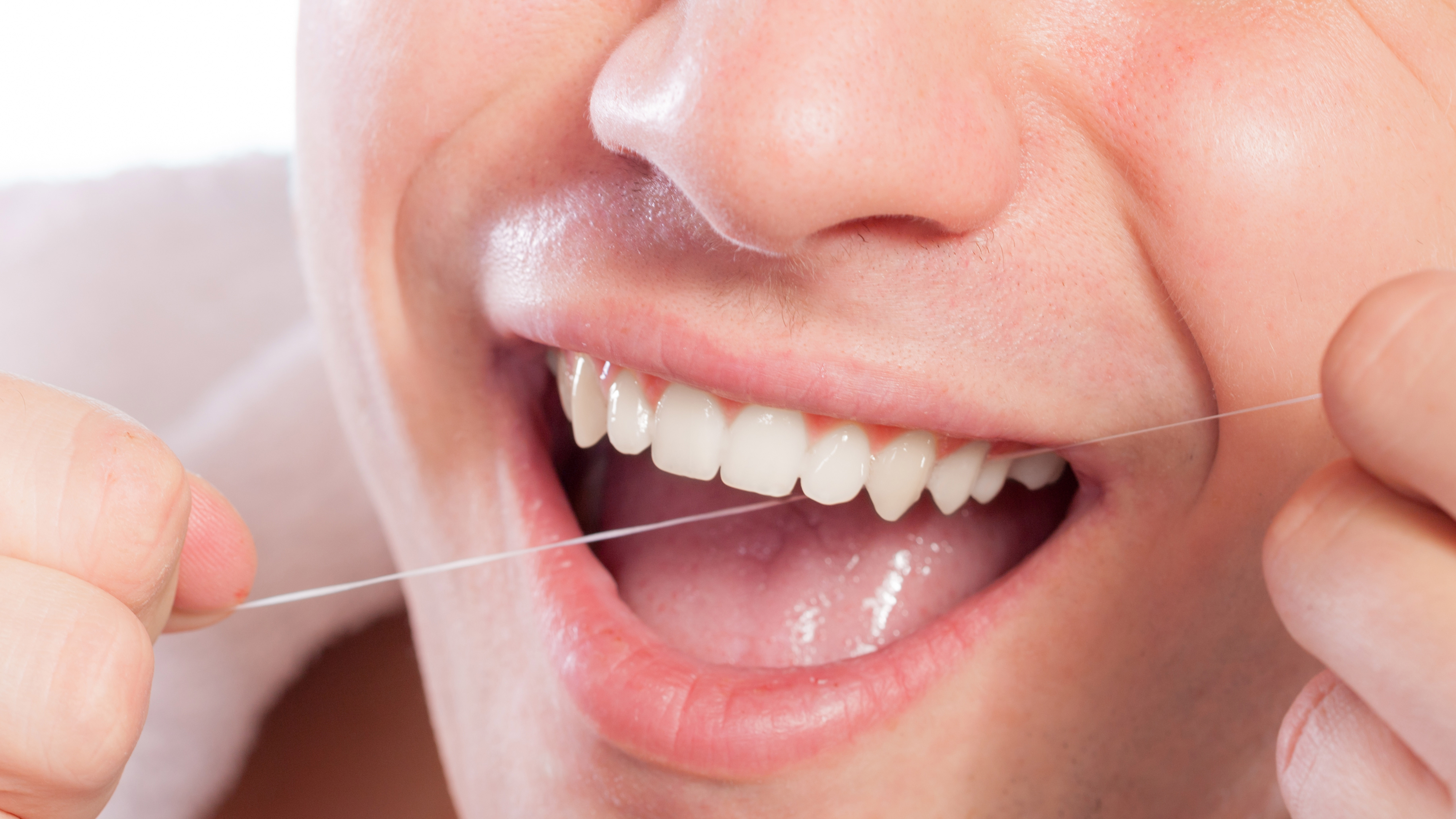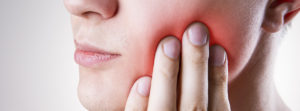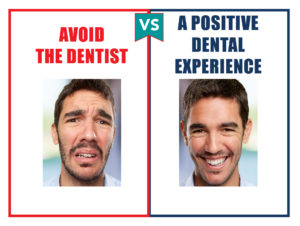Flossing Do’s and Don’ts
Flossing your teeth should be a daily habit for everyone. Understanding the importance of flossing daily is one thing. Getting into the habit of actually doing it is another. The more we floss and the healthier our gums are, the less sensitivity we have when flossing.
The more practice you have, the easier, quicker and more effective your technique will become.
DO hold your floss properly. Wrap it around your middle fingers and using thumb and index finger to control a short mid-section. Like this:

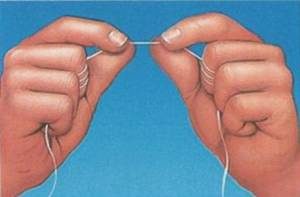
DON’T be miserly with your floss. You will find it easier, quicker and more effective when using a 30-40cm length of floss. If the length is too short, it will be difficult to hold and control and may also fray quicker.
DO remember to floss ALL your teeth. The old saying that you only needing to floss the teeth you want to keep is a good one to keep in mind.
DON’T think that mouthwash is just as effective as flossing. It just isn’t. Mouthwash kills bacteria that sits on the outer surface of plaque. The mechanical action of flossing removes the plaque altogether.
DO floss all sides using the floss. Floss is most important for cleaning the “contact” (C) point between 2 teeth and for cleaning under the gumline at the base of each tooth.
Allow the floss to gently slide down the tooth, below the gum line. This should be repeated for the adjacent tooth as well. (A and B)
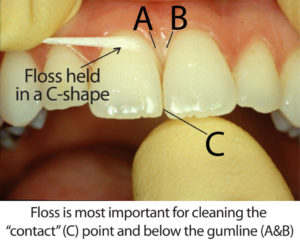

DON’T pull the floss back and forth between your teeth. This can cause damage to the tooth and gum. Always use an up and down “scraping” motion using the floss in a C-shape.


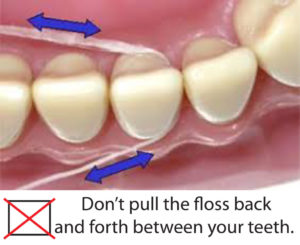
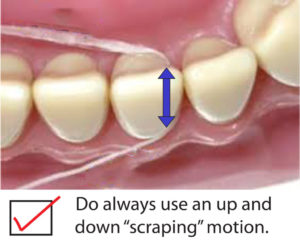
DON’T pull the floss down onto your gum. Always direct the pressure against the side of your tooth, not in the direction of your gum. Using the floss in a C-Shape around your tooth will help with this.
DO brush after flossing. Flossing dislodges debris which it may still remain in between or around your teeth.
DON’T floss many times a day. Just floss effectively once a day.
DO floss when you have enough time available so that you do a good job. Removing plaque and bacteria just before bedtime is a good idea because when we sleep, saliva flow reduces making our mouth less protected from bacterial damage.
DON’T be concerned if you notice a little blood after flossing. If this continues after 3-4 days of daily flossing, give us a call as your soft tissue health may need to be checked.
DON’T ignore areas where floss is starting to catch or snag. This could indicate a problem with your tooth or perhaps with a filling or crown in that area. Give us a call if this occurs to avoid dislodging your dental work.

